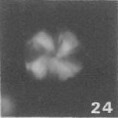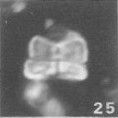Eukaryota aktasii
Set number: 2380
-
1
-
2
-
3
-
4
-
5
-
6
-
7
-
8
-
9
-
10
-
11
-
12
-
13
-
14
-
15
-
16
-
17
-
18
-
19
-
20
-
21
-
22
-
23
-
24
-
25
-
26
-
27
-
28
10µm
Set number: 2381
-
1
-
2
-
3
-
4
-
5
-
6
-
7
-
8
-
9
-
10
-
11
-
12
-
13
-
14
-
15
-
16
10µm
Set number: 2382
-
1
-
2
-
3
-
4
-
5
-
6
-
7
-
8
-
9
-
10
-
11
-
12
-
13
-
14
-
15
-
16
-
17
-
18
-
19
-
20
-
21
-
22
-
23
-
24
10µm
Set number: 2383
-
1
-
2
-
3
-
4
-
5
-
6
-
7
-
8
-
9
-
10
-
11
-
12
-
13
-
14
-
15
-
16
-
17
-
18
-
19
-
20
-
21
-
22
-
23
10µm
Set number: 2384
-
1
-
2
-
3
-
4
-
5
-
6
-
7
-
8
-
9
-
10
-
11
-
12
-
13
-
14
-
15
-
16
-
17
-
18
-
19
-
20
-
21
-
22
-
23
-
24
-
25
-
26
-
27
-
28
-
29
-
30
-
31
-
32
10µm
Set number: 2385
-
1
-
2
-
3
-
4
-
5
-
6
-
7
-
8
10µm
Set number: 2386
-
1
-
2
-
3
-
4
-
5
-
6
-
7
-
8
10µm
Set number: 2387
-
1
-
2
-
3
-
4
-
5
-
6
-
7
-
8
10µm
Set number: 2388
-
1
-
2
-
3
-
4
-
5
-
6
-
7
-
8
-
9
-
10
-
11
-
12
10µm
Heliolithus aktasii Varol, 1989c
Emended by Bowman & Varol, 2021: Medium size [6.0–8.0μm] and circular species of Heliolithus has about equal diameter birefringent disc and a column (best seen in side view). The height of the parallel-sided or slightly distally narrowing column varies, but is often higher than the disc. Distinct depressions are present at both ends of the narrow canal. The disc and column are constructed of a similar number of segments (about 24), and the segments of the disc and column are of equal width.
In the distal view, the extinction lines demonstrate a dextrogyre pattern (e.g. Pl. 39, figs. 9, 10 in Bowman & Varol, 2021). In contrast, the extinction lines show a laevogyre character in the proximal view (e.g. Pl. 39, figs. 11, 12 in Bowman & Varol, 2021). When viewed using a gypsum plate, the horizontal axis resides within the blue sector on the distal side, but the vertical axis occurs within the blue sector on the proximal side. The disc and column are birefringent in side-view and plan-view. The column appears yellowish in the plan-view, and the disc and column look reddish-blueish in the side-view.
Heliolithus aktasii differs from the species of Caycedoa based on the diagnostic birefringent pattern of its disc in plan-view. The disc is non-birefringent in plan-view in the species of Caycedoa. The column and disc of Heliolithus aktasii do not display flaring-out behaviour, whereas Heliolithus riedelii demonstrates a flaring-out character of the column and disc. In some specimens, there appears to be a skinny band at the disc-column interface (Pl. 38, figs. 2, 3, 6, 7; Pl. 40, figs. 2, 3, 5, Pl. 41, figs. 3,7 in Bowman & Varol, 2021). This skinny band is most likely an optical illusion. It is also possible that the specimens were slightly tilted away from us when the photos were taken.
Bowman, A. R. & Varol, O. 2021. A Taxonomic Revision of Heliolithaceae - Applications in Resolving the Problematic Calcareous Nannofossil Biostratigraphy of the Paleocene. In: M. Montenary, M. (Ed.). Calcareous nannofossil biostratigraphy of the Stratigraphy and timescales. 6: 43-223.
Varol, O. 1989c. Palaeocene calcareous nannofossil biostratigraphy. In: Crux, J. A. & van Heck, S. E. (Eds), Nannofossils and their applications. Proceedings of the 2nd INA Conference, London 1987. British Micropalaeontological Society Publication Series 265-310.

